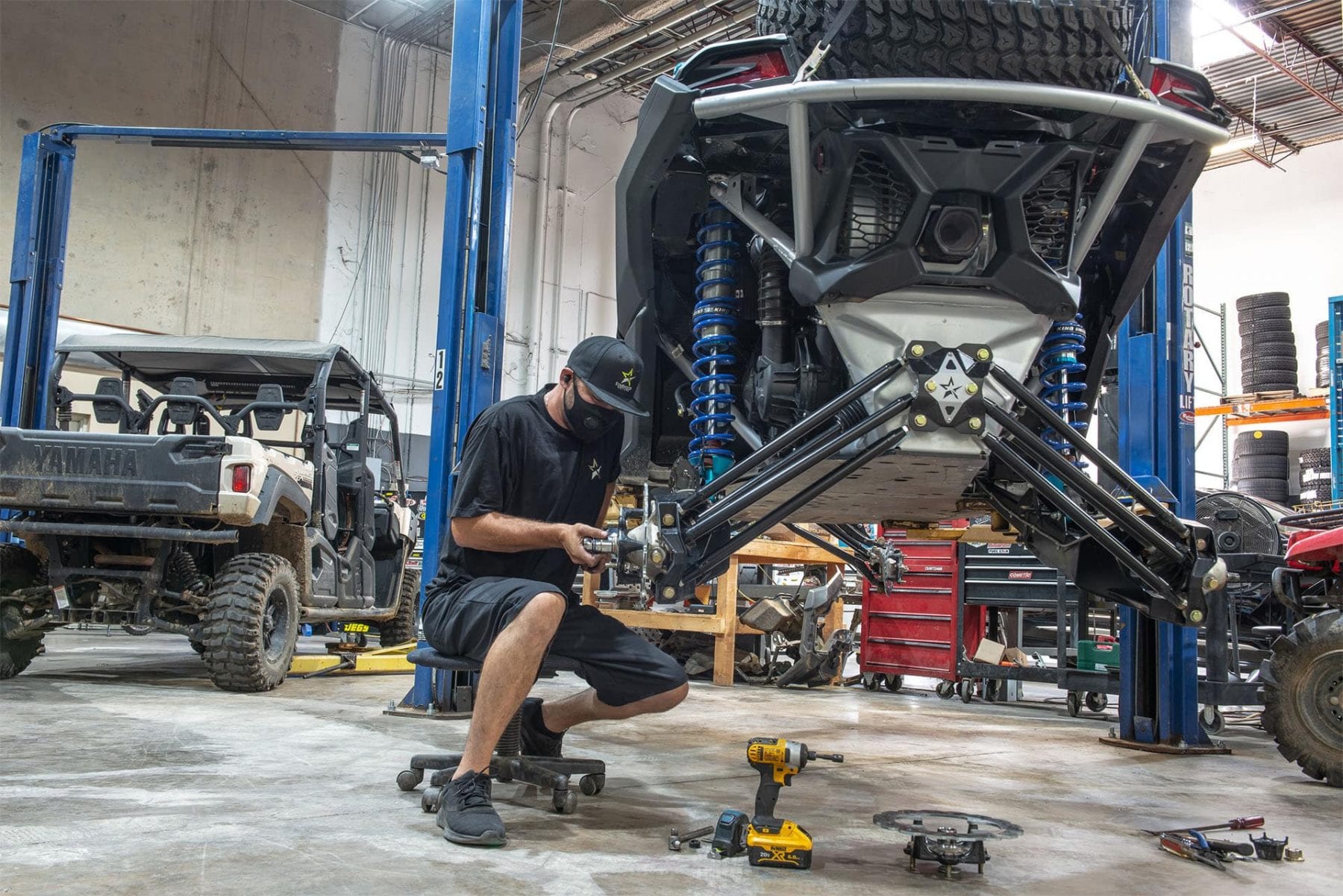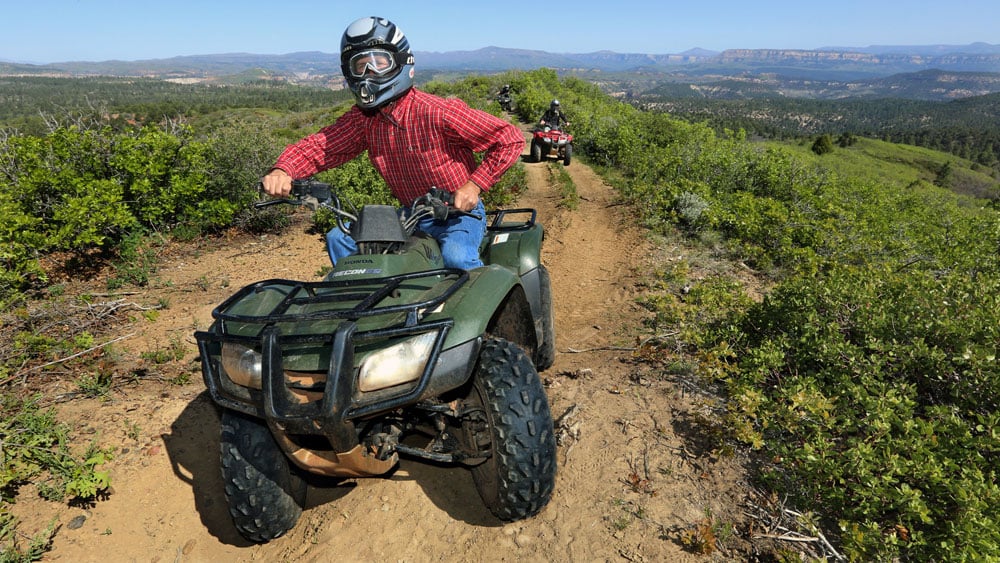Opening the Thrills: Mastering ATV Riding Techniques for Beginners
Opening the Thrills: Mastering ATV Riding Techniques for Beginners
Blog Article
ATV Riding Strategies: Grasping the Art of Off-Roading

Body Positioning
To effectively browse with challenging off-road surface, it is essential for ATV bikers to continually maintain correct body positioning. Preserving the correct body placement while riding an ATV not only improves control and security however additionally makes certain the biker's safety and security. By embracing the proper body positioning strategies, riders can successfully disperse their weight, improve their equilibrium, and decrease the threat of mishaps or injuries.
Putting the feet on the foot pegs allows the motorcyclist to maintain stability and control over the ATV. The rider's knees need to be somewhat curved, providing a mild suspension to maintain and soak up shocks balance.
Additionally, the motorcyclist's eyes should always be focused in advance, scanning the terrain and expecting any barriers or modifications in the route. By preserving an onward stare, cyclists can make split-second choices and react appropriately to testing surface.
Throttle Control
Building upon the relevance of appropriate body positioning for ATV motorcyclists, grasping throttle control is a critical skill that allows cyclists to efficiently navigate via different off-road terrains. Strangle control describes the capability to regulate the quantity of power provided to the ATV's engine. By comprehending how to manipulate the throttle, cyclists can guarantee a smooth and regulated velocity, enabling them to navigate challenges with accuracy.
Among the essential elements of throttle control is discovering to regulate the throttle efficiently. Sudden or jerky activities can trigger the ATV to lose grip or come to be unstable, making it difficult to maintain control. Rather, bikers ought to go for progressive and purposeful throttle inputs, specifically when passing through tough terrains. This strategy permits the ATV to maintain a stable speed and offers much better traction, reducing the risk of mishaps.
Along with smooth inflection, motorcyclists must also find out just how to stabilize the throttle with various other riding methods, such as body positioning and braking. When climbing up steep hillsides, motorcyclists need to apply adequate throttle to maintain energy without triggering or subduing the atv wheel spin. Likewise, when coming down steep inclines, bikers need to utilize the throttle in mix with correct body stopping and positioning to keep control and protect against the ATV from gliding or tipping over.

Braking Techniques
An important aspect of ATV riding methods is mastering effective stopping strategies. When it pertains to off-roading, understanding read more just how to brake effectively can make a considerable difference in your security and control over the vehicle. Among the most critical stopping methods is utilizing the front brake even more than the back brake. The front brake provides most of the stopping power, so it is crucial to utilize it sensibly. It is essential to bear in mind that extreme braking with just the front brake can create the ATV to pitch forward, possibly leading to loss of control or even flipping over. Consequently, it is suggested to apply both brakes simultaneously, yet with more pressure on the front brake. Another important method is to stay clear of locking the wheels while stopping. Securing the wheels can lead to skidding, making it challenging to preserve control. To avoid this, press the brake levers progressively and release them slightly if you really feel the wheels locking. By mastering these stopping methods, you can enhance your ATV riding abilities and make sure a risk-free and delightful off-roading experience.
Cornering Techniques
One vital element of grasping ATV riding methods is understanding reliable cornering techniques. Catching on an ATV can be challenging, but with the right methods, motorcyclists can browse turns safely and efficiently. The secret to successful cornering is to preserve control of the ATV while optimizing grip and decreasing the risk of tipping over.
To perform a proper cornering method, riders must come close to the turn at a proper rate, ensuring they are not going too fast or also sluggish. It is essential to shift the body weight towards the within of the turn, leaning into it to keep balance and stability. This aids to counterbalance the centrifugal pressure and maintains the ATV upright.
Furthermore, bikers should keep their eyes concentrated on the departure factor of the turn as opposed to the immediate course ahead (ATV). This permits for helpful site smoother and a lot more accurate guiding, as it helps the cyclist prepare for any obstacles or adjustments in terrain
Additionally, proper throttle control plays a significant function in cornering. Bikers should modulate the throttle smoothly, staying clear of abrupt accelerations or slowdowns, which can cause loss of control.
Uphill and Downhill Riding
When browsing off-road terrain, ATV riders must understand the methods for uphill and downhill riding to preserve control and make certain safety. Downhill riding, on the other hand, calls for bikers to lean back and change their weight in the direction of the rear of the ATV. By grasping the techniques for uphill and downhill riding, ATV motorcyclists can confidently tackle numerous off-road surfaces and appreciate a secure and thrilling journey.
Conclusion
To conclude, understanding the art of ATV riding calls for a mix of body positioning, throttle control, braking techniques, and reliable cornering. Uphill and downhill riding additionally call for certain skills to browse securely. By implementing these strategies, motorcyclists can enhance their off-roading experience and boost their total control and safety see it here and security on the ATV.
ATV Riding Techniques: Grasping the Art of Off-Roading is a detailed guide that dives into the intricacies of mastering the abilities required for off-road ATV riding. Whether you are a beginner or a skilled rider, ATV Riding Techniques: Understanding the Art of Off-Roading uses essential guidance to assist elevate your off-road ATV riding skills to the next level.

Report this page